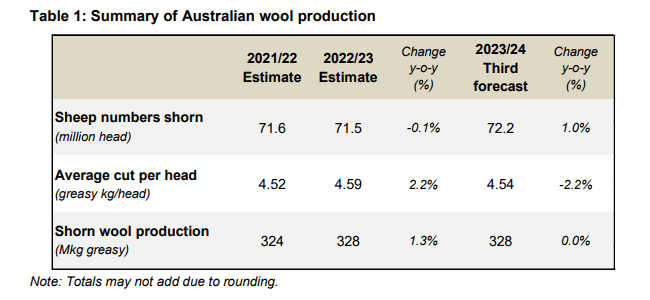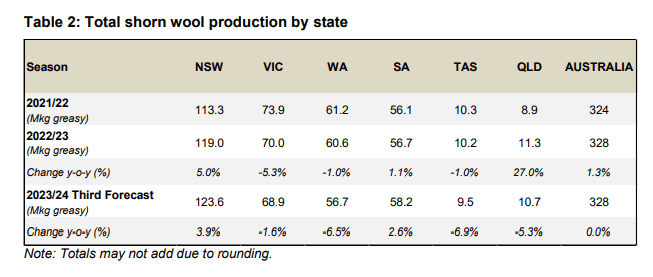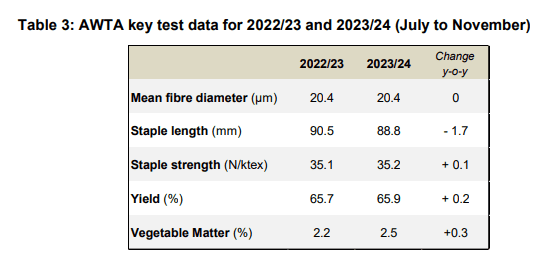
SHORN wool production is expected to increase in New South Wales and South Australia in 2023/24, but decrease in all other states, according to the latest industry production forecast.
The Australian Wool Production Forecasting Committee’s third forecast of shorn wool production for the 2023/24 season is for 328 million kilograms (Mkg) greasy.
This unchanged from the 2022/23 estimate and a 4 Mkg greasy upward revision of the August forecast.
The committee estimates the number of sheep to be shorn in 2023/24 will increase 1 percent on 2022/23 to 72.2 million head, due to held over lambs and retention of older breeding ewes.
 Shorn wool production is expected to increase in New South Wales (up 3.9pc) and in South Australia (up 2.6pc), but fall in Victoria, Queensland and Western Australia.
Shorn wool production is expected to increase in New South Wales (up 3.9pc) and in South Australia (up 2.6pc), but fall in Victoria, Queensland and Western Australia.
The committee estimates the average cut per head is forecast to reduce 2.2pc to 4.54kg greasy due to dry seasonal conditions and a return to normal shearing patterns in most states.
Committee chairman Stephen Hill said the revised December forecast reflected a larger number of sheep shorn as lower sheep meat prices relative to wool have increased the number of held over lambs and retained older breeding ewes.
“New South Wales is forecast to shear 26.9 million head this season with favourable seasonal conditions in southern regions of the state expected to compensate for the relatively poorer season in northern regions.”
The committee said seasonal conditions have been average to dry across all key wool producing regions since the August forecast period. Shearing is reported to be on time and even ahead of the normal schedule in many regions, compared to last season when shearing was delayed by up to three months due to wet weather.
 The committee said AWTA key test data showed no change in mean fibre diameter at 20.4 microns and a 1.7 mm reduction in staple length to 88.8 mm.
The committee said AWTA key test data showed no change in mean fibre diameter at 20.4 microns and a 1.7 mm reduction in staple length to 88.8 mm.
The earlier shearing combined with low sheep meat and cattle prices have increased auction volumes, with AWEX first hand offering up 8.9pc compared to last season and an increase in the volume of prematurely shorn wool (up 15pc).
The committee said producers in some regions are taking advantage of lower stock prices and purchasing good quality younger stock to replace their older age groups. There is also some indication of a move away from composite sheep production to a first cross enterprise to improve the value of wool produced from sheep meat focussed enterprises.
Source – AWI.

HAVE YOUR SAY